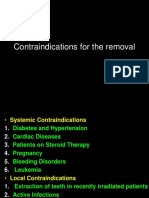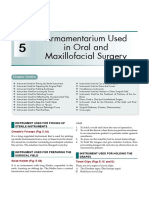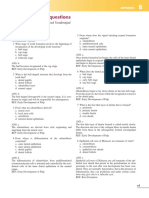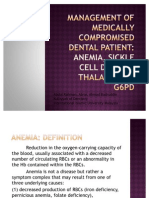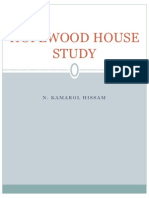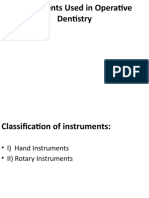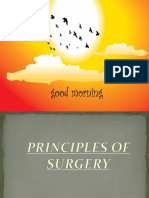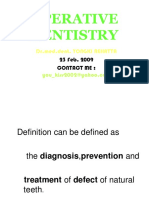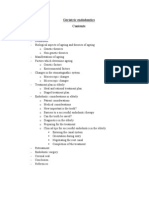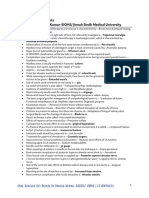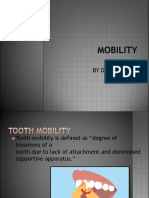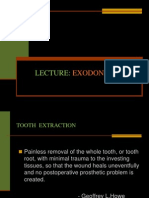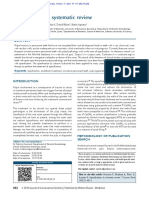100% found this document useful (1 vote)
1K views80 pagesPRINCIPLES of Uncomplicated Extraction
The document discusses principles of uncomplicated tooth extraction, including indications, contraindications, presurgical assessment of medical history, tooth factors, and surrounding bone as well as principles of forceps use, chair position, pain and anxiety control, and infection control protocols. Proper presurgical evaluation and use of techniques like the North American or British technique can help ensure extractions are performed safely and complications are avoided. Patient factors like access, tooth alignment, and mobility as well as bone density and proximity to vital structures are important to assess before undertaking uncomplicated exodontia.
Uploaded by
Obu KavithaCopyright
© © All Rights Reserved
We take content rights seriously. If you suspect this is your content, claim it here.
Available Formats
Download as PDF, TXT or read online on Scribd
100% found this document useful (1 vote)
1K views80 pagesPRINCIPLES of Uncomplicated Extraction
The document discusses principles of uncomplicated tooth extraction, including indications, contraindications, presurgical assessment of medical history, tooth factors, and surrounding bone as well as principles of forceps use, chair position, pain and anxiety control, and infection control protocols. Proper presurgical evaluation and use of techniques like the North American or British technique can help ensure extractions are performed safely and complications are avoided. Patient factors like access, tooth alignment, and mobility as well as bone density and proximity to vital structures are important to assess before undertaking uncomplicated exodontia.
Uploaded by
Obu KavithaCopyright
© © All Rights Reserved
We take content rights seriously. If you suspect this is your content, claim it here.
Available Formats
Download as PDF, TXT or read online on Scribd
/ 80



